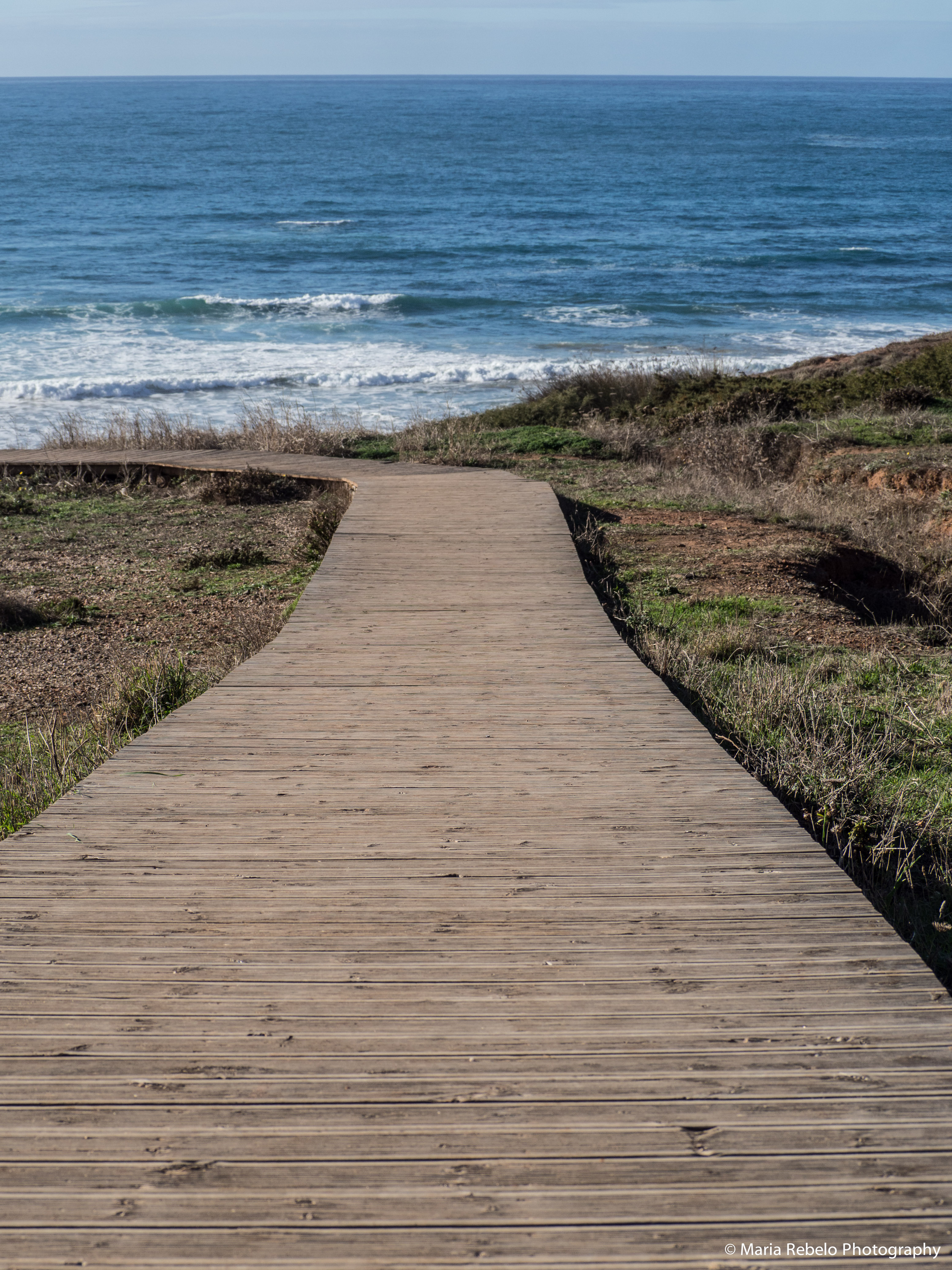Alta, a new restaurant perched on a cliff overlooking Praia da Areia Branca, offers mesmerizing views of the Berlenga island and the endless sea. But it was hard to pay attention to the view once the tempting appetizers arrived at our table. First, a plump burrata adorned with an enticing tomato jam. Then, marinated mackerel seasoned with salicornia and green grapes—a culinary dance of saltiness, sweetness, and acidity. Next, fabulous codfish cakes–light, crisp, and full of flavor. Finally, a stunning lobster salad beautifully served in its shell.
In a blatant plea for attention, the sun began to set, painting the sky with brilliant yellow hues. We admired the spectacle, but our focus shifted to the main courses: mouthwatering seafood rice and a succulent roasted pork belly. The menu tempted us with many other delights, such as grilled fish and codfish confit. The meal ended with a taste of sweetness from slices of chocolate and ricotta cakes.
Alta has become popular since opening on June 10, so it’s best to make a reservation. But even waiting for a table is a pleasure–we can sit on the esplanade drinking an aperitif and taking in the magnificent vistas.
Chef Julie Marteleira and her sister Jennifer moved from Toronto to Praia da Areia Branca to create Alta. Even though they were born in Canada, this venture feels like a homecoming. Their parents, Joana and Joaquim, got married in Abelheira, a quaint village you can see from the restaurant. Julie dreamed of one day working in Portugal. We’re all lucky that her dream has come true.
Alta is located at Alameda a Ver-o-Mar, no 1, Praia da Areia Branca, Lourinhã, tel. 261 422 310.










